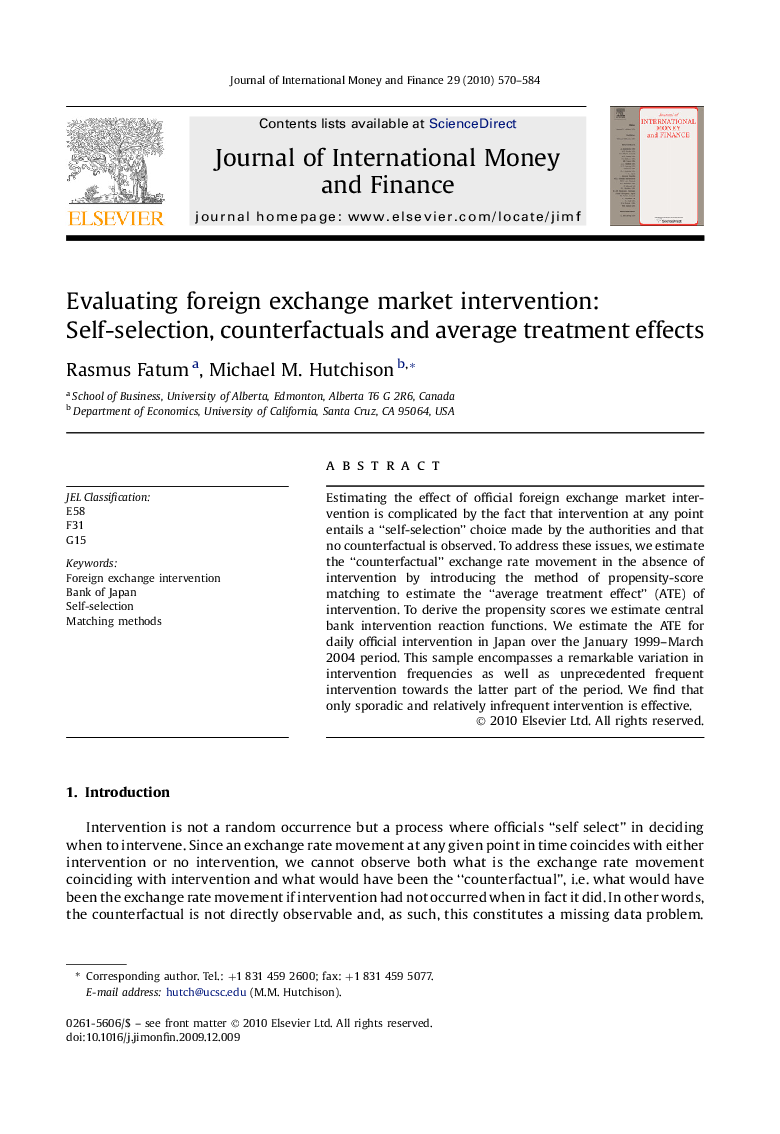| Article ID | Journal | Published Year | Pages | File Type |
|---|---|---|---|---|
| 964222 | Journal of International Money and Finance | 2010 | 15 Pages |
Estimating the effect of official foreign exchange market intervention is complicated by the fact that intervention at any point entails a “self-selection” choice made by the authorities and that no counterfactual is observed. To address these issues, we estimate the “counterfactual” exchange rate movement in the absence of intervention by introducing the method of propensity-score matching to estimate the “average treatment effect” (ATE) of intervention. To derive the propensity scores we estimate central bank intervention reaction functions. We estimate the ATE for daily official intervention in Japan over the January 1999–March 2004 period. This sample encompasses a remarkable variation in intervention frequencies as well as unprecedented frequent intervention towards the latter part of the period. We find that only sporadic and relatively infrequent intervention is effective.
